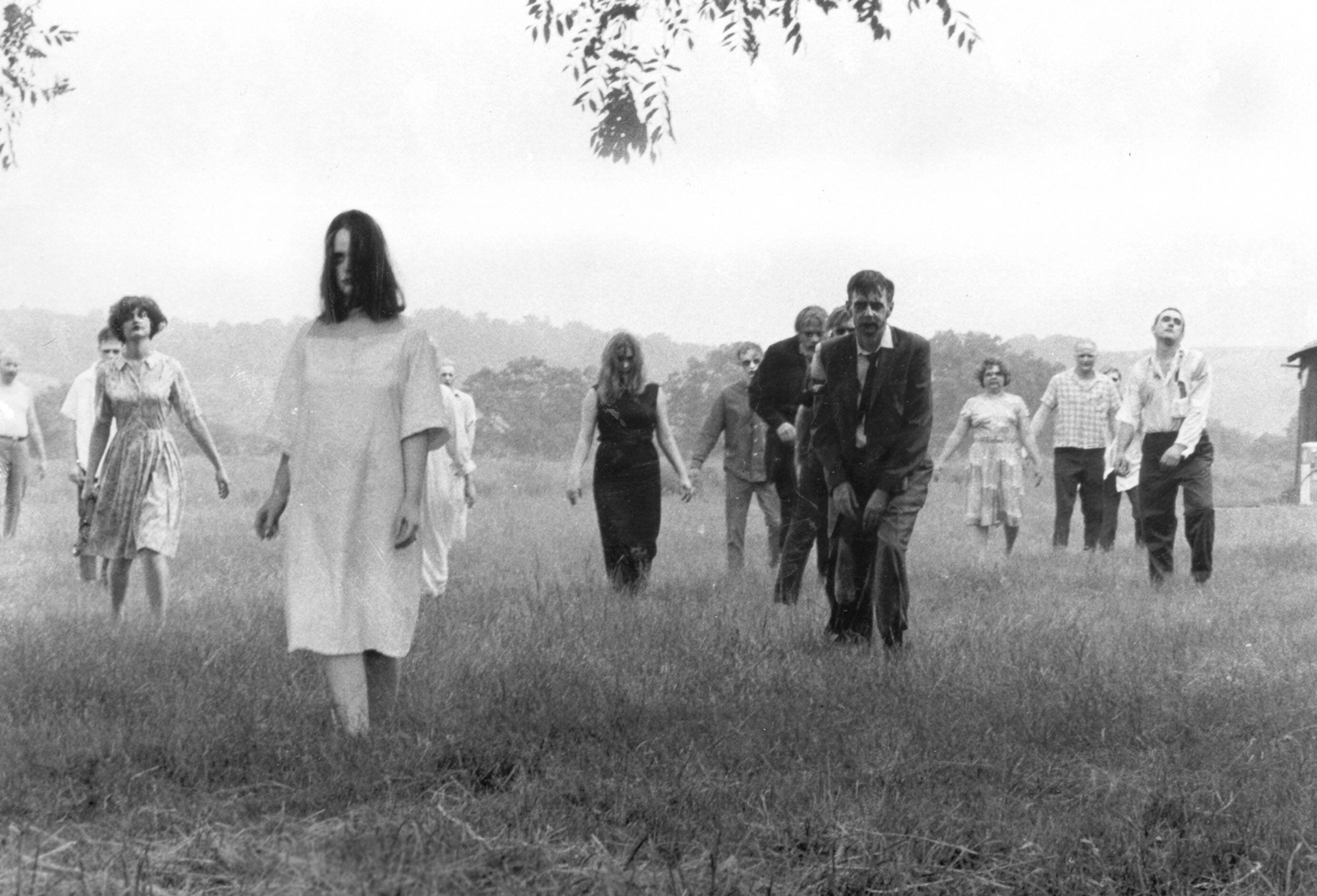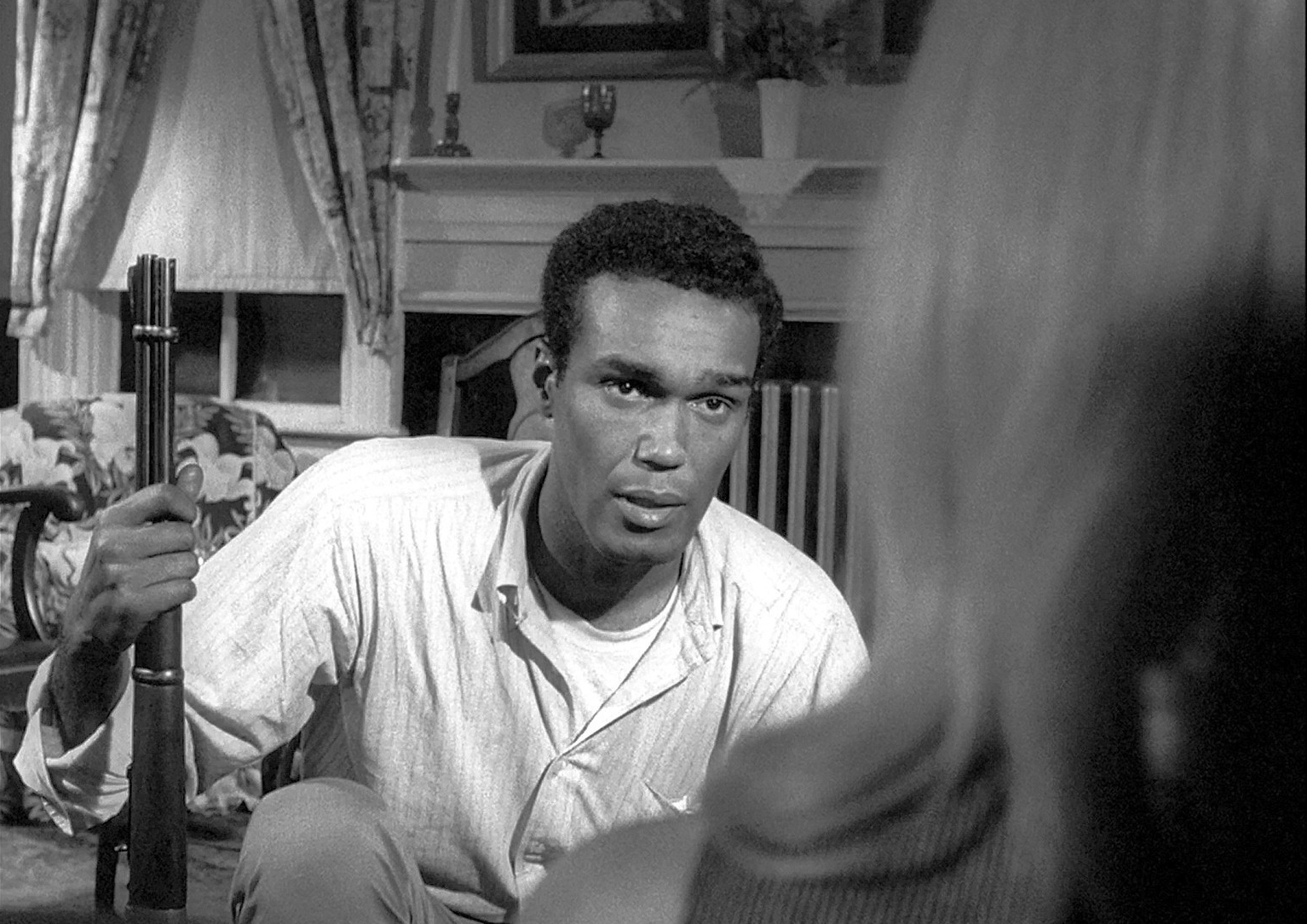The movie that was “1968” was a multi-screen extravaganza orchestrated by a mad projectionist who kept changing reels.
From a New York perspective, the reverberations of late 1967’s two great shockers, Bonnie and Clyde and The Battle of Algiers (which had opened the New York Film Festival), were still felt when the first great movie of 1968, Stanley Kubrick’s 2001: A Space Odyssey, opened at a moment of intense euphoria—the golden week between LBJ’s abdication and the assassination of Martin Luther King, Jr., complete with the architect of the Prague Spring, Alexander Dubček, on the cover of Time.
Things were already spinning out of control when La Chinoise, Jean-Luc Godard’s ambivalent portrait of Parisian Maoists, materialized for a week at a commercial theater in early April, one day before Dr. King was shot and a few weeks before student radicals occupied several buildings at Columbia. The exploitation film Wild in the Streets—which recast sex-drugs-and-rock’n’roll as a political movement—was released in Los Angeles on the same day that students took over another building and remained in theaters through the presidential election. Over the course of its run, the vision of a twenty-something pop star president who spikes the nation’s drinking water with LSD served to prophesy and allegorize many things: Yippie fantasies, student uprisings in Paris and elsewhere, China’s Red Guards, the Eugene McCarthy and Bobby Kennedy campaigns, and the debacle of the Democratic National Convention in Chicago.
That fall, an even more apocalyptic vision of societal collapse materialized when Godard’s Weekend had its American première at the 1968 New York Film Festival. Weekend, which marked the zenith of Godard’s American popularity, may be definitive for many. Still, the quintessential 1968 movie then and now remains Night of the Living Dead, made by George Romero, John Russo, and their fellow employees at a Pittsburgh film lab. Parodying the paranoia of rightwing editorial writers, Wild in the Streets was not of the counterculture but about it—and imperfectly at that. It remained for Romero’s collectively made and far grimmer exploitation film, which was shot during the traumatic spring of 1968, like Easy Rider, in the American hinterlands, to embody the chaos that Weekend represented.
In our Midnight Movies, Jonathan Rosenbaum and I joked that the title Night of the Living Dead suggested a beat poet’s characterization of the evening news. Never has social breakdown, individual regression, or the return of the repressed been more luridly visualized: scores of corpses rising from the grave to feast upon the living. Catastrophe within catastrophe, the movie pits black against white, child against parent, hawk against dove—and that’s just in the besieged farmhouse that provides the movie’s main location.
As the marauding ghouls provide a grimly hilarious cross-section of ordinary Americans, so Night of the Living Dead offered the most literal possible image of the nation devouring itself, as it brought the Vietnam War home, importing the destructive violence of Watts, Newark, and Detroit to bucolic Middle America. Not for nothing is one dazed character, traumatized by the attack of a cannibal ghoul in an American flag-bedecked cemetery, forever mumbling, “What’s happening?” It was the question of the hour.
Where Wild in the Streets was a rogue Hollywood production, Night of the Living Dead was a triumph for low-budget, regional, independent filmmaking. A piecemeal production, made with pooled savings, shot in black-and-white on weekends and between jobs, that ultimately took the better part of a year to complete, it demonstrated the power of outré independent films to provide new social metaphors and outgroup fantasies. Produced off-Hollywood, Night of the Living Dead was not bound by Hollywood conventions. The movie’s rough-hewn style had the raw immediacy of underground movies and direct documentary; its cheap but vivid effects gave Weekend’s burning cars and hippie cannibalism a vérité spin. The narrative offered no happy ending, no authoritative voice-over, no reassurance whatsoever. On the contrary, the film systematically undermines the authority of the father, the police, and the media.
Unrelentingly grim and profoundly skeptical, Night of the Living Dead is the very opposite of what Jacques Ellul called “sociological propaganda.” The besieged characters are entranced by the TV, they follow its directions explicitly, move close to it for comfort, and rejoice when it is repaired despite the fact that the TV is blatantly another world—static, sterile, and populated by officious personalities. While 1950s sci-fi movies tried to reproduce the voice of authority, Night of the Living Dead satirized it with deadpan newsreaders solemnly reciting the latest bulletin: “These ghouls are eating flesh. Repeat. They are eating flesh.”
Night of the Living Dead further asserted its marginal status by casting a black actor (Duane Jones) as the film’s smartest, most capable, and sympathetic character. Thus, although race is never overtly alluded to, viewers were more or less compelled to attribute racial paranoia to certain white characters while identifying with a minority point of view. (The filmmakers denied an intention to make a political point, but the point was made.) Sidney Poitier’s mainstream appeal notwithstanding, there may not have been a movie before Night of the Living Dead that encouraged the audience to cheer when a black character shot and killed an American white man.
Advertisement
While The New York Times dismissed Night of the Living Dead as “a grainy little movie” made by “some people in Pittsburgh,” that looked like it was printed on “twenty-year-old army stock,” other critics were more properly horrified. “This film casts serious aspersions on the integrity of its makers, distrib Walter Reade, the film industry as a whole, and exhibs who book the pic, as well as raising doubts about the future of the regional cinema movement and the moral health of filmgoers who cheerfully opt for unrelieved sadism,” Variety opined, adding that, “Until the Supreme Court establishes clear-cut guidelines for the pornography of violence, [this] will serve nicely as an outer-limit definition by example.” In its way, Night of the Living Dead was the indie-horror-drive-in equivalent of Luis Buñuel and Salvador Dalí’s 1930 audience-assault L’âge d’Or. (Reader’s Digest even republished from the Chicago Sun-Times an all-out attack on the film by the young Chicago critic Roger Ebert.) Strikingly, no contemporary reviews seem to have mentioned the 500,000 American troops then in Vietnam or the wide-scale violence that followed the assassination of Dr. King.
Not just a collective production, Night of the Living Dead was a film whose meaning was created by its audience—or rather audiences—as it short-circuited established patterns of publicity and exhibition. After its initial run in grind-houses and drive-ins, the movie was re-released the next summer with an eye to black audiences, on a double bill with Slaves, another Walter Reade production, the crude but effective anti-Gone with the Wind made by the former member of the Hollywood Ten and unrepentant Marxist Herbert Biberman.
Positive reviews of Night of the Living Dead in The Village Voice, Cahiers du Cinéma, and elsewhere led to a special screening at the Museum of Modern Art in 1970. Six months later, the film began turning up as a midnight movie; from the end of 1971 through the summer of 1973, it was playing midnight shows in cities and college towns across America. It is suggestive that the film’s cult popularity peaked during the period when the counterculture was dissolving and the trauma of Vietnam was being most actively repressed through Nixon’s disengagement of American ground troops—keeping alive a retrospective vision of 1968, long after Wild in the Streets had been forgotten and Easy Rider had become already hopelessly camp. It exists today as a memory of “1968.”
Indeed, that Night of the Living Dead never uses the term “zombie” yet provided a template for a half-century of zombie movies effectively links it to a submerged discourse on slavery, colonialism, and alienated labor—“1968” issues, all. “The tradition of all the dead generations weighs like a nightmare on the brain of the living,” Marx wrote in The Eighteenth Brumaire of Louis Napoleon. He might have been describing Night of the Living Dead.
Everything Was Now: “1968” Circa 1968, at The Metrograph from September 7 through September 10, is programmed by J. Hoberman.




